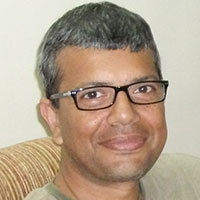Macroeconomic Takeoff and Distributional Churning in India
 01 April, 2012
01 April, 2012
- IGC Research on India
The past 25 years have witnessed a remarkable economic catch-up by the historically discriminated against scheduled castes and tribes (SC/STs) in India towards non-SC/ST levels in terms of their education attainment levels, their occupation choices as well as their wage and consumption levels. In this project Amartya Lahiri and Viktoria Hnatkovsky document that these aggregate data patterns mask empirically significant sectoral hetereogeneity in the evolution of the caste gaps in wages: wage gaps have declined in services, widened in agriculture and stayed unchanged in manufacturing between 1983 and 2008. Lahiri and Hnatkovsky develop a multi-sector model with two types of agents to show how aggregate total factor productivity shocks along with a process of structural transformation can induce a convergence between the two groups without any other concurrent redistributive policy changes as long as there exists an initial affirmative action policy in education and/or jobs for the relatively disadvantaged group. The researchers provide some indirect evidence in support of this channel by examining the convergence patterns of Muslims who were not covered by such affirmative action policies.










Comments will be held for moderation. Your contact information will not be made public.